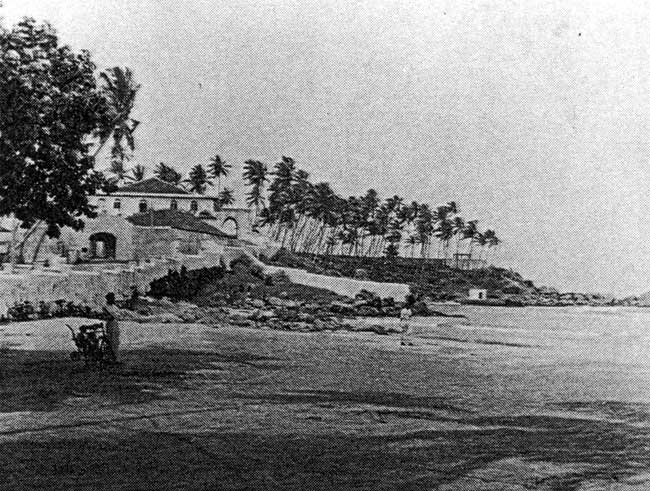‘His fine natural taste led him to choose for his house a site of almost unequaled beauty …..
a perfect little Miramar’
Ernst Haeckel – ‘A Visit to Ceylon’
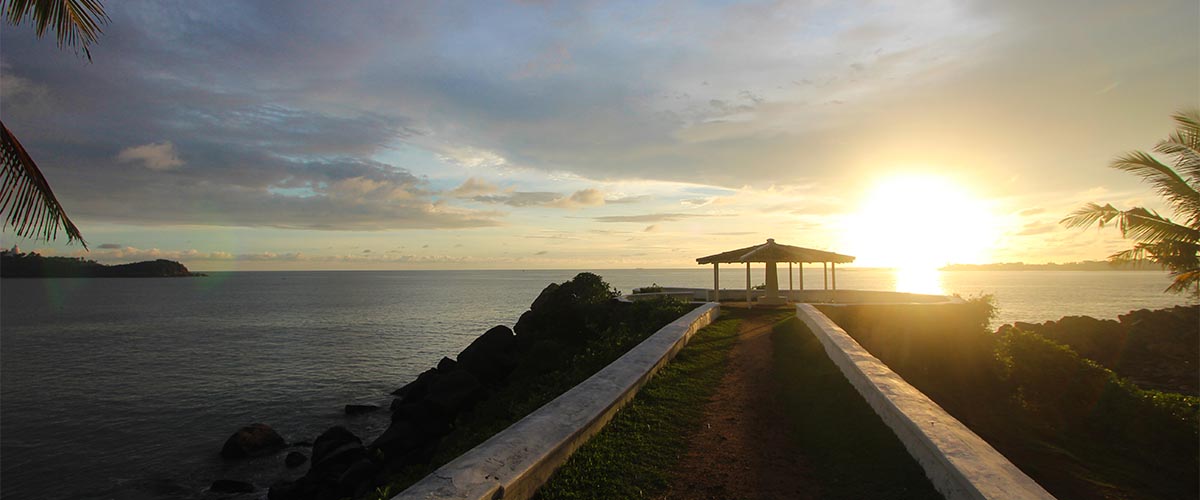
“Closenberg” lies to the south of the Galle Town, in a peninsula jutting out into the Galle Bay. It is found just beyond the Galle Town in the area known as Magalle, on the main Galle-Matara highway. A prominently placed name board will point you onwards to this historic and scenic place. Turn into the road which leads to the Ports Authority, and then branch off to the left. This road narrows and climbs past the impressive mansion on to a promontory.
Today Closenberg is a quaint little hotel, that offers a breathtaking view of Galle and it’s harbor. The beauty of the place will entrance even a casual visitor. The more observant may however notice that the mansion on which a hotel stands today, is somewhat unique and different, and is neither of the old ‘Wallauwa’ style or the Dutch Colonial style. Herein lie the mystery and the romance of the place.
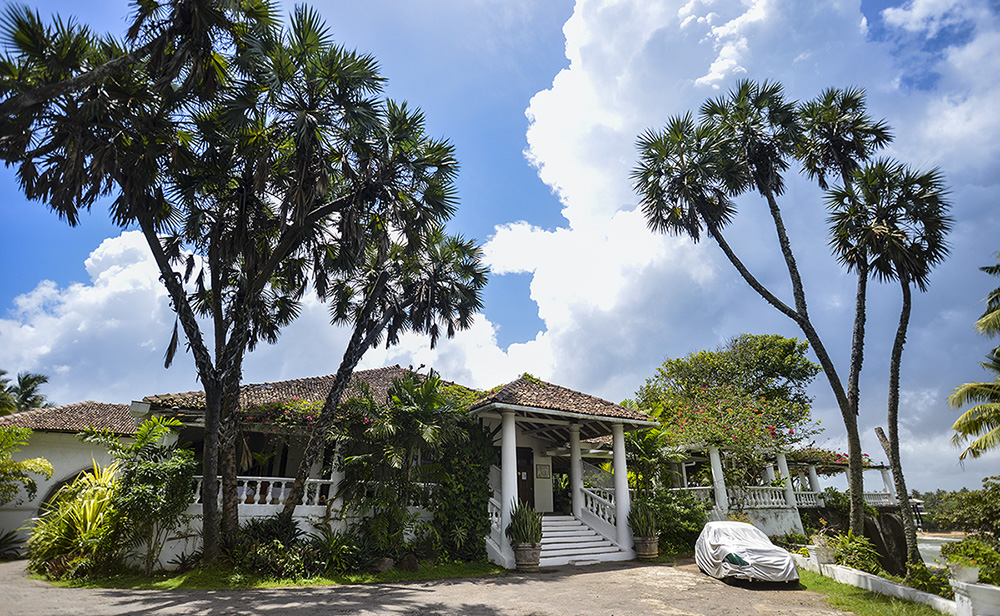
Closenberg today, with the Doulm Palms (or Binary Trees) described by Ernest Haeckel in 1886.
History
The popular ‘Closenberg’ hotel of today has a well-documented and fascinating history going far back to Dutch times. This old colonial mansion in Galle is also one of the best preserved of mansions in southern Sri Lanka.
The name originated when the Dutch built a small fortalice on the promontory, on the southern side of the Galle bay in 1719. This island at the southern entrance of the Galle Bay, was called Klossenburg (or Kloffenburg), meaning ‘Fortalice or Citadel on which the sea roars’.
Klossenburg housed a battery of two guns and the Singhalese called it such the ‘Aluth Kotuwa’ or the New Fort. However by the time the British took over Galle in 1790, the little fortress lay abandoned. It remained such till Captain Bailey arrived in Galle in the steamer ‘Hindustan’ in 1859. Captain Francis Bailey arrived as an agent for the Peninsular & Oriental line, which has started a steamer service between Calcutta and the Suez. As soon as he discovered the disused fort, he immediately negotiated and bought it from the British Crown. However in her book ‘A Family Memoir’ Marjorie de Mel, a descendent of the first Ceylonese owner of this property, offers a somewhat different view as to how Capt. Bailey got this land.
‘ In the early 1800’s the land was known as Aberanwatte. On the 3rd of May 1810, a quarter share of the land was put up for sale for a debt of 2088 dollars incurred by Gerrit Joan Hubertus of Galle. It was brought by Cornelis de Silva Gooneratne Ranasinghe Arachchy for 425 dollars. In time Ranasinghe Arachchy became the sole owner of Aberanwatte and eventually sold the island to Captain Bailey.’
The Captain, who was a master carpenter and mason, designed and built the manor in 1861 and named the enchanting house after his wife as “Villa Marina”. A summerhouse was built at the end of the promontory, and here a flagstaff used to fly the P&O flag. Annette Swan writing on the Times of Ceylon Annual, 1971 speaks of the housewarming party.
‘When it was completed there was a sumptuous house-warming party. Wine flowed freely, and sharp on the stroke of midnight Bailey stood on the threshold of his house in the midst of goodly company and bashed a bottle of champagne on the rocks below.’
Mrs. Bailey was an artist, and decorated the house and filled the gardens with the finest varieties of ferns and blooms. The plants arrived from the far corners of the P&O trade route that extended from Calcutta to the Suez. The Baileys lived in the house till 1871, and sold it to the P&O Steamship Company for use as the official resident of the agent. As bailey was the agent he continued to live there until the agency shifted offices to Colombo. It would have broken Captain Bailey’s heart when he was compelled to sell his house in 1889. In 1870s the new breakwater of the Colombo harbour was completed and gradually all merchant shipping activity shifted to Colombo. With this, Captain Bailey too moved and settled in Colombo. Closenberg remained closed, and Galle lay asleep.
Closenberg House
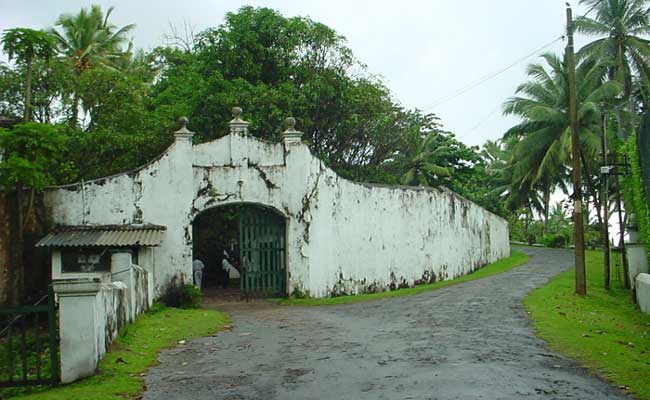 |
 |
Entering the compound of the Closenberg Hotel, one is greeted by a huge milky-white wall, which certainly suggest it’s meaning of a ‘cliff Citadel’. The massive gate you encounter first, was at one time the entrance to the servant’s quarters and the stables. Continuing up the driveway one comes across the front porch and the main entrance to the house. The new hotel reception and entrance has been shifted onto the side of the building with ample parking space for the visitor. The promontory narrows beyond this point and runs further along to the sea, and ends in a summer hut, which gives the visitor a panoramic view of the Galle harbour and the Fort, now a world heritage site. The Rumassala Range and Unawatuna bay, a surfers paradise lies a little further to the south.
Entering thru the reception a visitor is taken to its spacious verandah with the now closed main entrance and stairwell. In olden days this spacious verandah offered a breathtaking view of the old town. It is said that Captain Bailey being a seafarer, designed this part of the house to resemble the bridge of a ship. One is still tempted to relax in the authentic antique chairs from the 19th century, and gaze into the distant fort now totally obscured by the Navy Galle Port Complex.. Antique brass lamps hang from the high ceiling. Right above the main entrance stairwell is found the coat of arms of the present owners of this property, the Perera Abeywardena family. The Coat of Arms carries emblems such as the pearl umbrella handed down to members of the Karava clans by the Singhala Kings, and the motto in Singhalese, which reads “Service on to others comes first”.
Crossing the lounge area filled with lovely antique cupboards and treasure chests, one comes to the famous indoor fernery. This has now been converted as a dining area. Closenberg in its day was famous for its varieties of ferns set up in this indoor fernery. Norah Roberts in her book “Galle as quiet as asleep” gives an account of the house built by Francis Bailey.
“The tops of the doors were embellished with the P&O Crest of the rising sun carved in English Oak. An extra large ornate oak crest tops the heavy beam across the fernery in the back verandah.”
These remain to date and so do the structures built entirely of patterned coral stones. The fountain in the middle and the ship shaped structures on the sides once contained exotic ferns. The enclosed grotto like structure at one end was once the aviary, housing exotic birds that the Baileys got down from different lands. A picture published in the book ’20th Century Impressions’ contains a photograph showing this beautiful fernery around the beginning of he 20th century.
Pergolas covered with bougainvilleas frame the side garden and the entrance overlooking the ocean. On both sides of the entrance stand two unusual palms of breathtaking beauty. These palms native to Egypt and known by the name ‘Doum Palms’ (or Doom Palm), was brought down especially by Captain Bailey around 1861 for propagation here. Earnest Haeckel who visited ‘Villa Marina’ in 1886 mentions his discovery of these fine specimens of the plants in his book ‘A visit to Ceylon’. Haeckel lived and studied the flora and fauna of Ceylon from around 1881 to 1888. He was an eminent German Zoologist and coined the much used term ‘ecology’ (he called it “Oekologie”) to describe the interaction of animals with their environment.
‘Among the many ornaments of this garden I was particularly interested to find several fine specimens of the Doom palm (Hyphaene Thebaica). The stalwart stem of this species does not, as in most palms, form a tall column, but forks like the stem of the Dracaena, and each branch has a crown of fan-shaped leaves. This palm grows principally in Upper Egypt, but I had already seen it at the Arab town of Tur, at the foot of Mount Sinai, and it is represented in my work on the Red Sea corals (plate iv, p. 28). How surprised I was, then, to find it here under all aspect so altered that I could scarcely recognize it’.
A short flight of stairs takes you down to the old stables and the servant’s quarters. As water was a problem, Bailey the master craftsman designed the house to collect all the rainwater thru a series of gutters into two tanks, which he had placed in the stables.
Closenberg Bay
Closenberg also lent its name to the beautiful sandy bay that was found between it and the adjoining island. The Closenberg bay was enclosed and offered a safe bathing place for the visitor, with many a rock pool for the children to waddle in. The area around Closenberg has been one of the most picturesque areas down south. It gradually eroded over time with the reclaiming of Closenberg bay for the Galle Port Development Project, never to regain its former self. Today it contains warehouses and derelict buildings of the Ports Authority, old oil storage tanks and other rusty paraphernalia encircled by a massive wire security fence put up by the Navy.
Running north from the summerhouse towards Galle Fort is a rock filled breakwater, which encloses the Galle Port Project and the Naval Command. Part of this land was reclaimed by dredging the bay, and pumping the sand and the water mix in to this area. The water gradually drained away leaving the filled up land mass that was once part of the Closenberg Bay. Only a few pictures remain of this once beautiful bay.
Annette Swan writing in the Times of Ceylon, remembers the great times spent on this beach.
‘I dreamt that I swam in the blue waters of the enchanting bay, lazed on its golden sands, and wandered around in the fabulous gardens of “Closenberg House”, which stood like a bastion on the crags above.’
Shown below are two rare color pictures of Closenberg Bay, believed to be taken in the late 1950s or very early 1960s, by photographer Mrs. F. E. St C. Hill (© Alexandra Harvey). The photograph is part of an extensive collection of Kodachrome color slides of then Ceylon, taken by Mrs. Hill, now being digitized by the family.
Three well-known paintings capture the beauty of Closenberg Bay. The most famous of them painted by Capt. Charles O’Brien shows the Fort of Galle from the P&O station in Closenberg Island. The other by an unknown artist shows the Galle harbour from the Rumassala range, with the Closenberg House on the extreme right. Its flagstaff placed near the summerhouse is shown flying the P&O flag. The third is by Andrew Nicholls who lived and painted in Ceylon during the period 1846 to 1850, and again shows the view of the Galle harbour from Closenberg Island.
All three of the above paintings also show a rocky island adjoining Closenberg. This was called the Gibbet Island or ‘Pransa Kande’ (Frenchman’s Creek) and this too has an interesting history. Gibbet is a French term for the guillotine, but in this case refers to the hangings that have taken place there. It has also been used as a cemetery and the locals believed that these unfortunate souls still haunt the place. But this did not stop an enterprising Frenchman from buying the island and building his home on it. He built up the side of the island with rock and cement and built a jetty to bring his boat alongside. His office was in the Fort of Galle and went to and fro in his little rowing boat. He may have been an assistant in the French shipping company – The Messageries Maritime. The Agent of the company, who was also the Consular for France, lived inside the Fort, opposite the windmill. With the shifting of the agency to Colombo, this island also fell into disuse. Nobody ever lived in this island thereafter. In later years Simon Perera Abeywardena bought this island to be used as a dump yard for his salvage business. Today it is part of the reclaimed land used by the Port Complex. The rocky outcrops can be still seen from the summer house of Closenberg.. The only clue to its existence today is a road named ‘Gibet Lane’, that a sharp eyed visitor may catch as they turn in to Closenberg from the main highway.
The Perera Abeywardena family and Closenberg
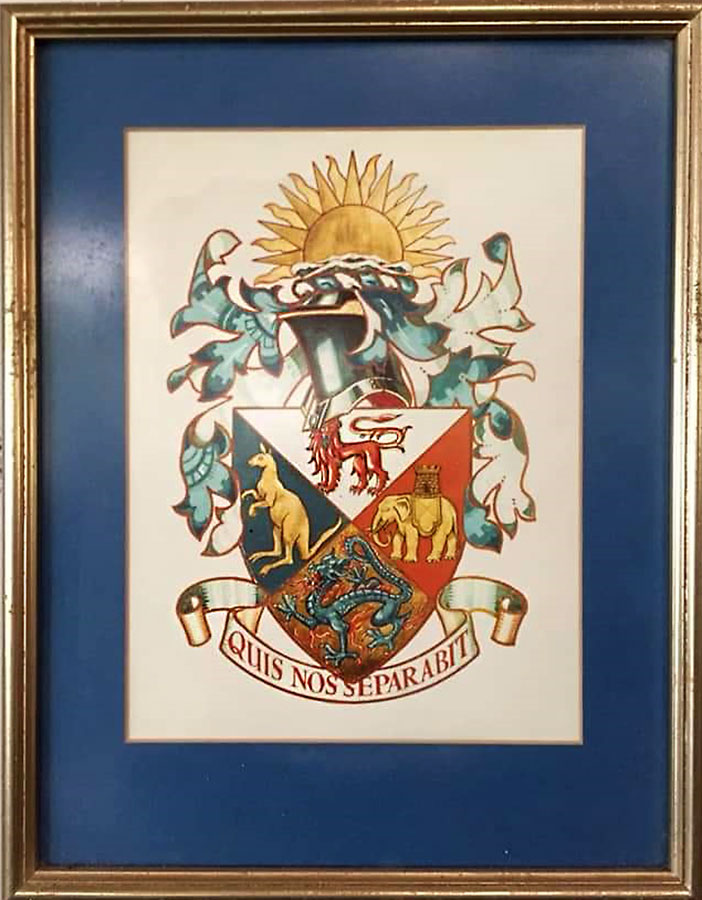 |
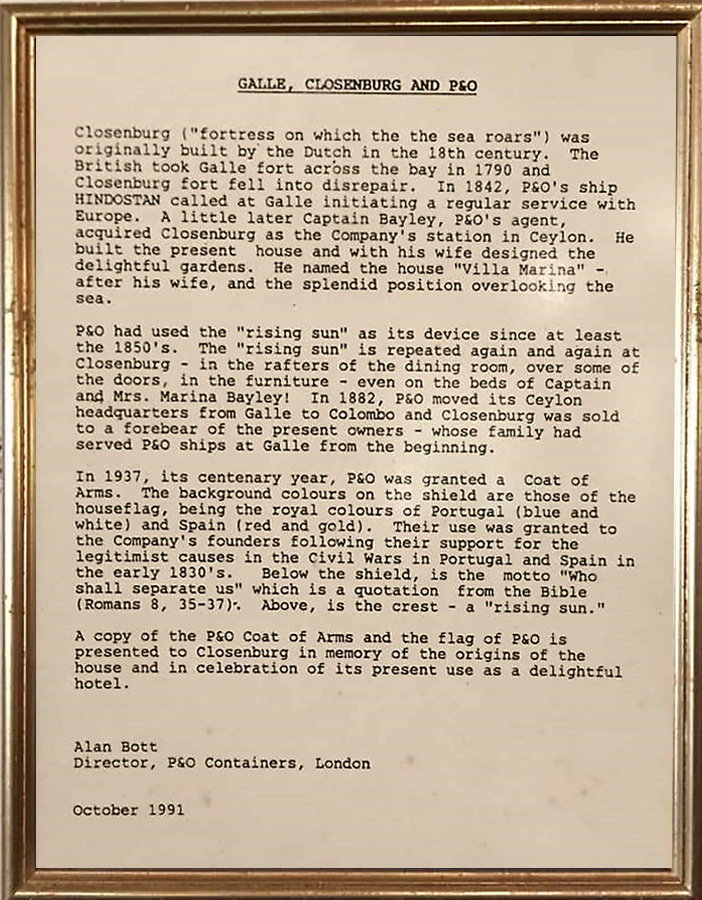 |
Christopher Perera Abeywardena obtained a contract with P&O Steamship Company as a ship chandler to handle cargo, especially coal, rice and supplies, and founded the Shipping and Wharfage Co. He bought a fleet of barges, employed a number of hands, and established a business that lasted many years and brought him and his family much wealth. His sons too joined him in the business. In later years this association brought his son Simon in close contact with Captain Bailey. Simon was a regular visitor to Closenberg and even named his eldest son ‘Francis’ in honor of Captain Francis Bailey.
With the shifting of all shipping and the agency activities to Colombo, Captain Bailey too moved to Colombo. From around 1884 to 1889 Closenberg was in the market for the ‘correct’ buyer, under a caretaker who took visitors on tours of the house and gardens. One such visitor was Francis Perera Abeywardena, then aged 9, who went to see all the great things in this house that his father Simon used to describe to them after his visits to see Capt. Bailey.
Therefore in 1889 it was to Simon Perera Abeywardena that the P & O was eventually persuaded to sell ‘Villa Marina’. The condition was that the property had to remain entailed to the Perera Abeywardena family. Simon Perera bought the property and changed the name of the mansion to ‘Closenberg’.
Over a century later the building still belongs to this old Galle family. Managing Director Kumar Perera Abeywardena is the present owner and proprietor of the hotel. Today it is a very popular hotel in Galle, and a favorite for weddings. In 1991, a copy of the P&O Coat of Arms and the flag of P&O were presented to him by Mr. Alan Bott, Director P&O Containers, in memory of the origins of the house.
Continued – Closenberg; The Perera Abeywardena Family
Contact Information: 11, Closenberg Rd Galle, Sri Lanka Telephone: 94 -9-32241 Website – www.closenburghotel.com
Photographs:

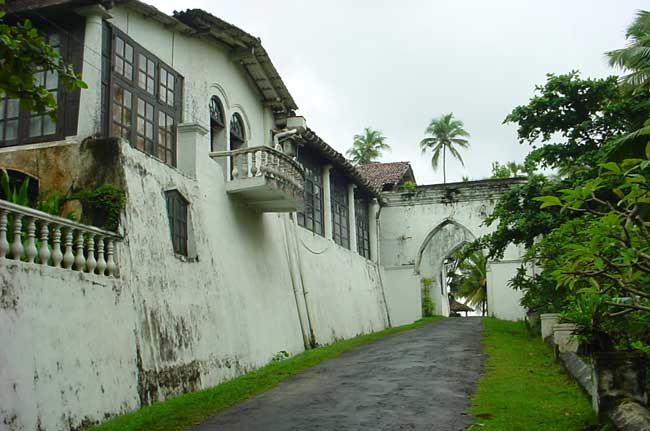
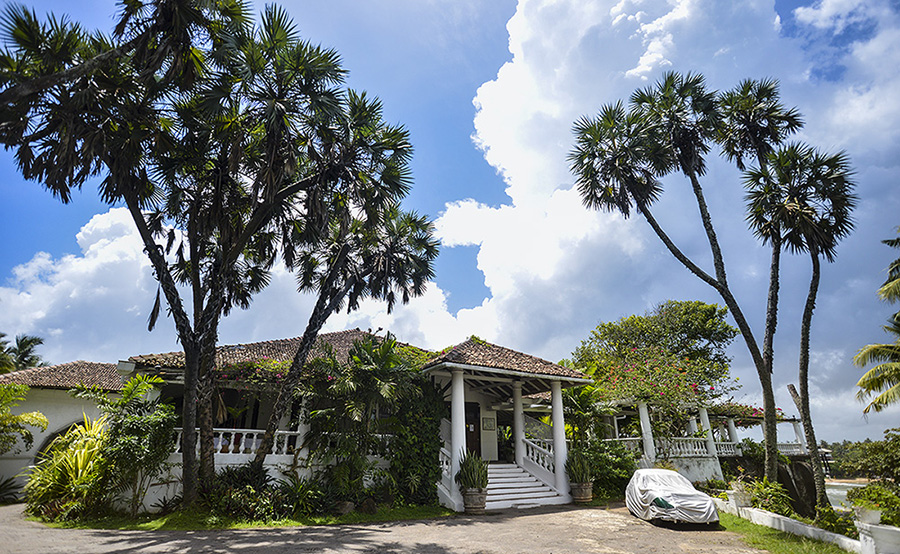
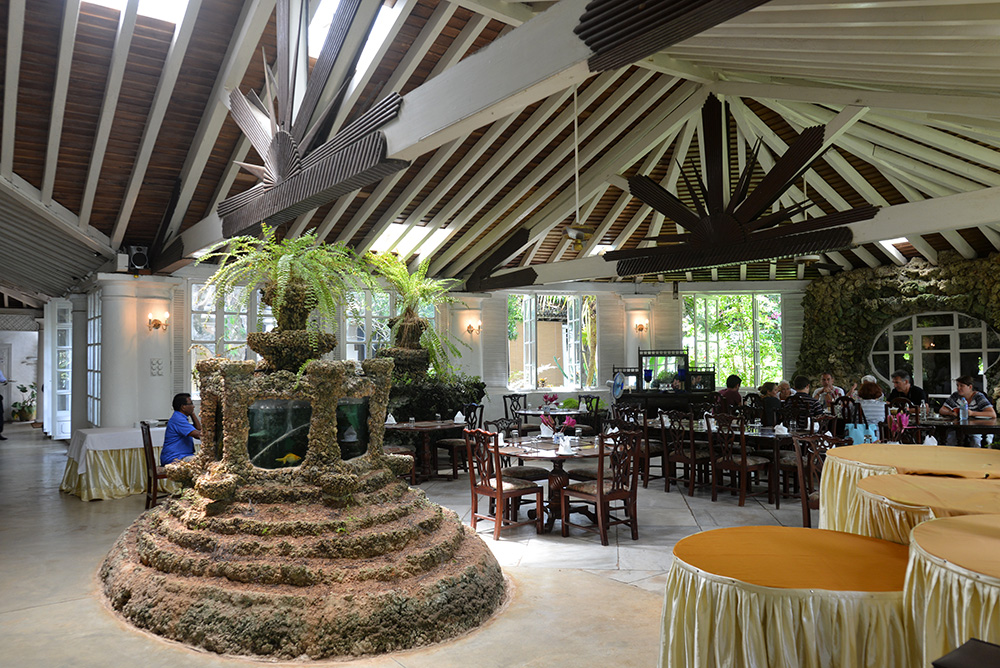
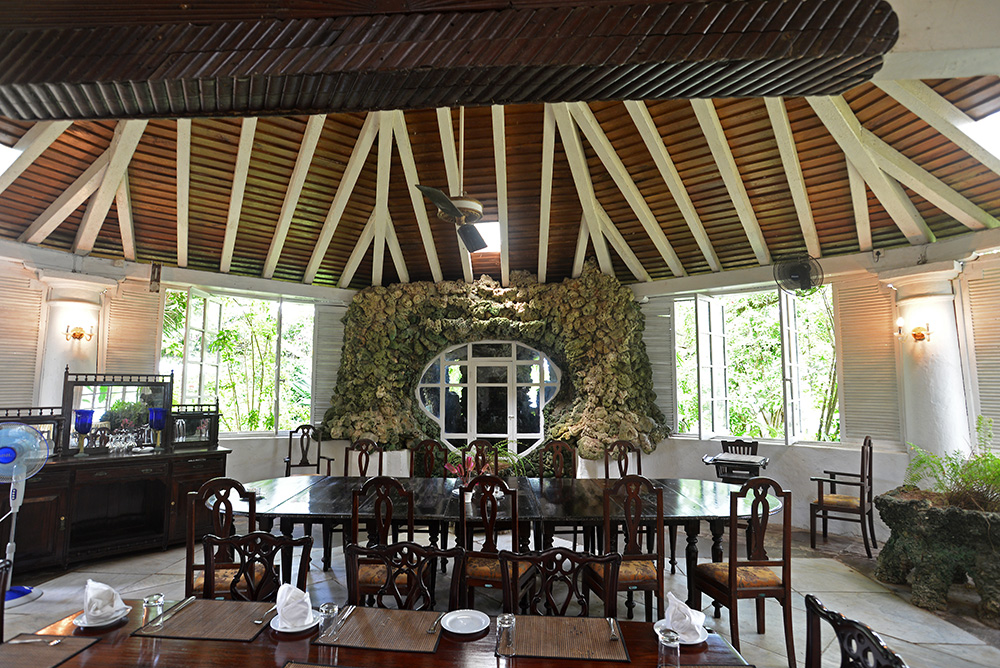
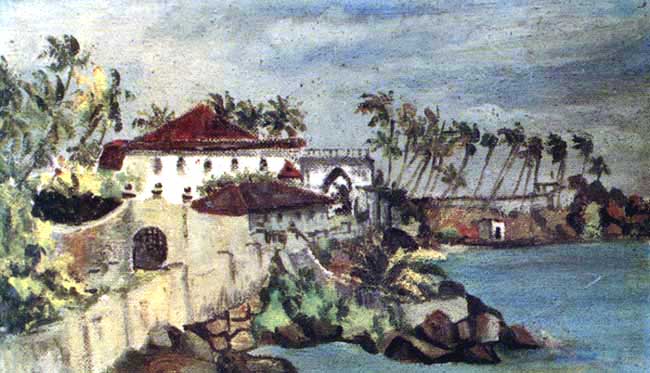

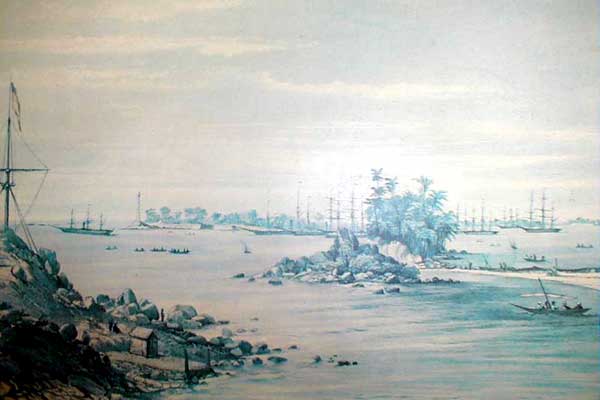
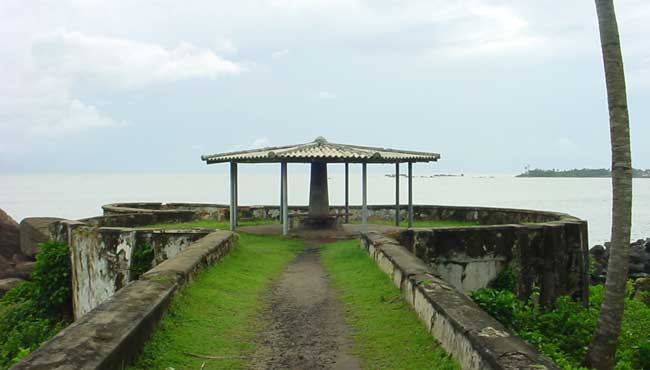
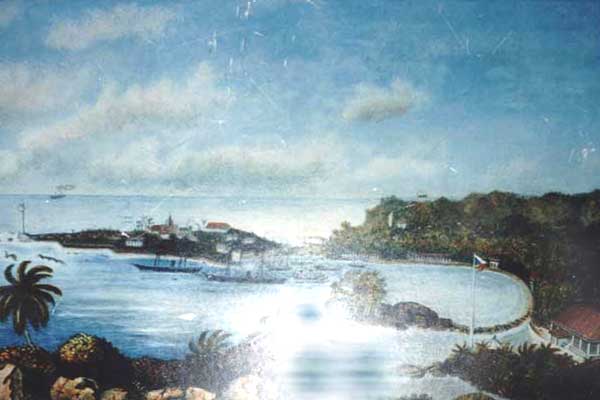

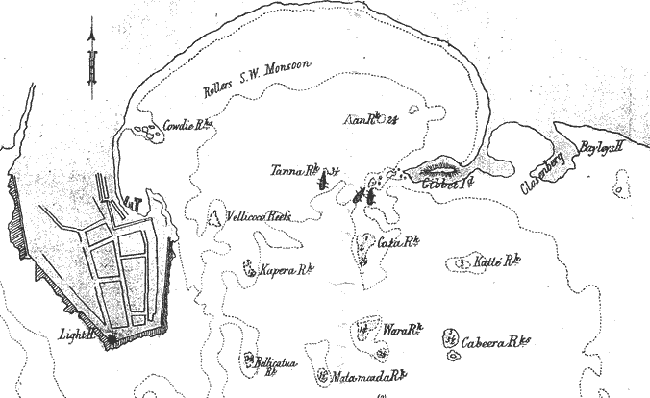
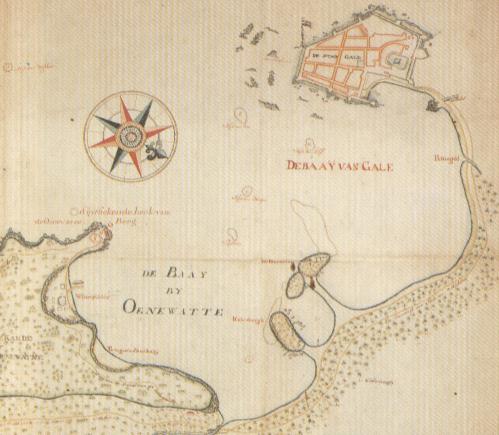
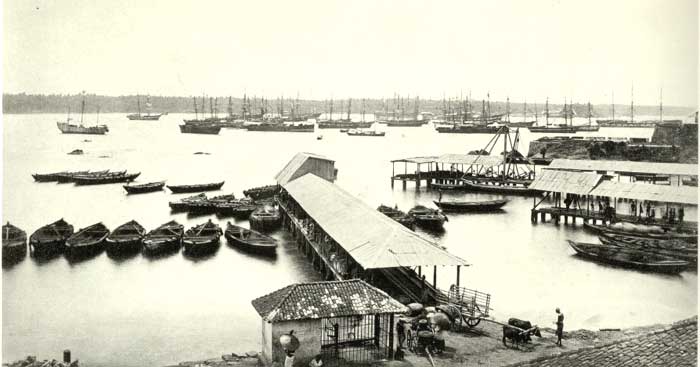

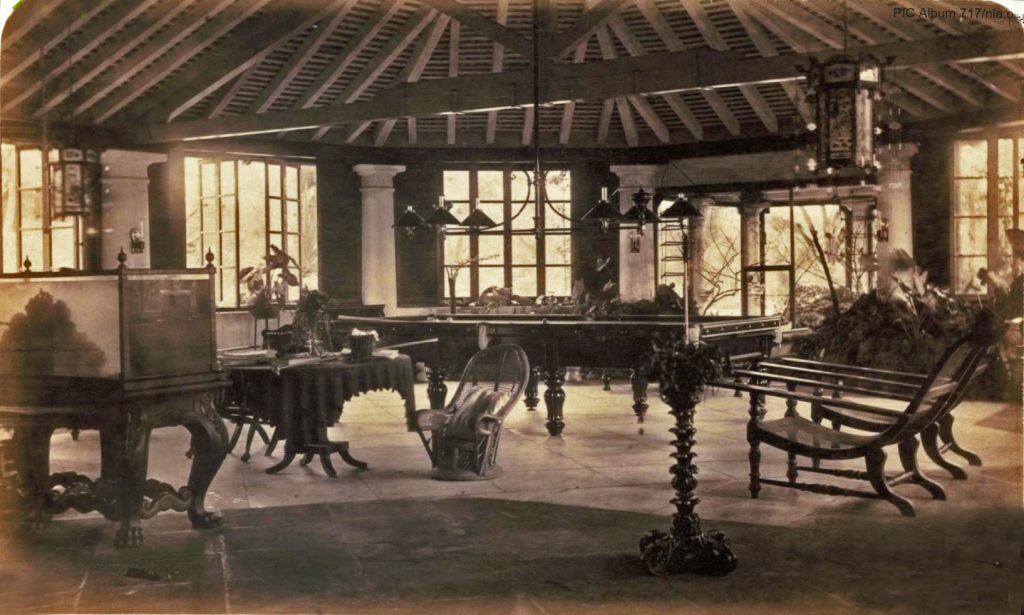
Related Stories:
The Early Postal History of Ceylon and the P&O Steam Navigation Company.
Don Bastian de Silva Jayasuriya Goonewardena.
Related Websites:
‘A Visit to Ceylon’ – Ernst Haeckel. From the Carl Stueber Library
Reference:
- “A Family Memoir” by Marjorie de Mel (in Private Circulation).
- 20th Century Impressions, Arnold Wright 1903.
- Remembering Closenberg, Annette Swan, Times of Ceylon Annual, 1971.
- ‘A Visit to Ceylon’ – Chapter 9 Ernst Haeckel – available online
- ‘Illustrations and Views of Dutch Ceylon, 1602 – 1796’ by R. K. de Silva.
- My thanks go out to Marilyn Harvey and Alexandra Harvey of UK, Daughter & Granddaughter of Mrs. F. E. Hill, for the image of Closenberg Bay, taken from their digital archive of Mrs. F. E. Hills work.
